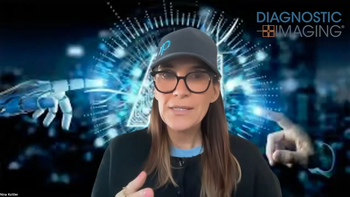
Specialized Social Networks Connect Radiology Community
Social networking in healthcare isn’t new, but there is a growing trend to create groups focused on particular specialty areas. And radiology is in the middle of it all, with networks bringing together physicians and technologists alike.
Social networking in healthcare isn’t new, but there is a growing trend to create groups focused on particular specialty areas. And radiology is in the middle of it all.
The American Society of Radiologic Technologists (ASRT) recently launched
Members can post questions, start conversations, or share ideas on what the association calls its “one-stop-knowledge-shop,” said Liana Watson, ASRT’s chief governance officer.
“The goal is to give ASRT members a place where they can come together and talk with someone who does the exact thing they do,” Watson said. “CT techs can talk with CT techs. MRI techs talk with MRI techs. It’s a one-stop shop where they can get information relevant to what they do every day.”
Participants choose one community to be a home page, but they can contribute to all 19 groups, Watson said. In addition to comparing opinions about cases, ASRT Communities provides access to news affecting the radiologic technology profession and links to certification and accreditation sites.
Nearly 30 percent of physicians connect professionally through online physician networks, according to a survey from QuantiaMD, the largest mobile and online physician community. Specialized social networks hold great potential for enhancing professional development and performance, said Garry Choy, MD, a Massachusetts General Hospital radiologist.
“Niche social networks can be very useful,” Choy said. “The ability to create a network focused around a particular specialty is a very powerful way to improve communication and collaboration, and that power can grow exponentially with the number of members.”
ASRT Communities builds upon other physician social networks that link you to colleagues across the country and worldwide. For instance, Diagnostic Imaging partner
Similarly,
“There’s a distinct benefit for pediatric radiologists who connect online. Yes, we have our own community we talk to, but it’s very interesting to get input from other pediatric providers - surgeons, pulmonologists, generalists,” D’Alessandro said. “They can tell us what information they need or want from us that we might not be aware of.”
Being part of a global provider community also introduces physician participants to medical cases they wouldn’t see in their own practice. There is much you could learn, he said, from talking with providers who work without the same arsenal of resources you have or who encounter conditions long eradicated in the United States.
However, Leonard Berlin, MD, former chair of the professionalism committee with the Radiological Society of North America, advised you to be cautious even when you share advice or information with colleagues online. Don’t offer the specific advice you might suggest if you were talking to your own patients.
“The bottom line is in all situations you should be careful that you don’t do anything that could be construed as establishing a patient-doctor relationship,” he said. “Even when you’re talking with colleagues, make your statements general so they aren’t interpreted as being direct advice for a patient.”
In fact, he said, printing out a hard-copy of your online discussions about patient care could protect you against future accusations that you provided incorrect medical advice.
Newsletter
Stay at the forefront of radiology with the Diagnostic Imaging newsletter, delivering the latest news, clinical insights, and imaging advancements for today’s radiologists.




























